Sulfonamide Allergy Safety Checker
This tool helps you determine if a medication containing 'sulfonamide' is safe for you based on your reported allergy history. Based on the latest medical evidence, most 'sulfa allergies' are mislabeled.
More than 1 in 10 people say they’re allergic to sulfa drugs. But here’s the truth: sulfonamide allergy is often mislabeled. Most of those people aren’t truly allergic at all - and they’re being denied safe, effective medications because of a misunderstanding that’s been around for decades.
The confusion starts with the name. ‘Sulfa’ sounds like it’s one thing. But there are two very different kinds of sulfonamide drugs. One group - the antibiotics like sulfamethoxazole and sulfadiazine - can cause real allergic reactions. The other group includes common pills for high blood pressure, glaucoma, and arthritis, like hydrochlorothiazide, furosemide, and celecoxib. And here’s the key point: if you’re allergic to one, it doesn’t mean you’re allergic to the other.
What Actually Causes a Sulfonamide Allergy?
True allergic reactions to sulfonamide antibiotics happen in less than half a percent of the population. That’s far lower than the 3-12% of people who report a ‘sulfa allergy’ in their medical records. Most of those reports are mistakes. A mild rash that showed up a week after taking sulfamethoxazole-trimethoprim? That’s often not an allergy - it’s a common side effect. A fever or upset stomach? Also not an allergy. Only reactions like hives, swelling, trouble breathing, or life-threatening skin conditions like Stevens-Johnson syndrome count as true IgE-mediated allergies.
The real issue lies in the chemical structure. Antibiotic sulfonamides have two specific parts: an arylamine group at the N4 position and a nitrogen-containing ring at the N1 position. These are what trigger the immune system in rare cases. Nonantimicrobial sulfonamides? They lack these exact pieces. Celecoxib, for example, has a methyl group instead of an arylamine. Furosemide and hydrochlorothiazide? Their structures are completely different. That’s why they don’t cross-react.
What You Can Still Take - Even With a ‘Sulfa Allergy’
If you’ve been told to avoid all ‘sulfa’ drugs, you’ve probably been denied several safe medications. Here’s what’s generally safe:
- Hydrochlorothiazide - a top choice for high blood pressure. Studies show the risk of reaction in people with sulfonamide antibiotic allergies is only 1.1%, the same as people with no allergy history.
- Furosemide - used for fluid retention. No meaningful cross-reactivity found in large patient studies.
- Celecoxib - a popular arthritis pain reliever. Despite being labeled a ‘sulfonamide,’ it’s structurally different and safe for nearly all patients with antibiotic sulfa allergies.
- Acetazolamide - used for glaucoma and altitude sickness. No evidence of cross-reactivity.
- Metformin - diabetes medication. Contains no sulfonamide group at all. Often confused because of the ‘sulf’ in the name, but chemically unrelated.
And here’s something else to remember: sulfur, sulfates, and sulfites are not sulfonamides. You can safely take Epsom salt (magnesium sulfate), wine with sulfites, or even certain contrast dyes used in imaging - none of these are linked to sulfonamide allergies. A 2020 survey found that nearly half of primary care doctors still get this wrong. Don’t let outdated beliefs keep you from safe treatments.
What You Should Still Avoid
Not all sulfonamides are created equal. If you’ve had a true allergic reaction to a sulfonamide antibiotic, you should still avoid these:
- Sulfamethoxazole-trimethoprim (Bactrim, Septra) - the most common sulfa antibiotic, used for UTIs and pneumonia.
- Sulfadiazine - used for burns and toxoplasmosis.
- Sulfasalazine - used for ulcerative colitis and rheumatoid arthritis. This one’s tricky - it breaks down into a sulfa antibiotic and another compound, so it carries risk.
- Dapsone - used for leprosy and Pneumocystis pneumonia. It shares structural features with antibiotic sulfonamides. Studies show up to 13% of people with prior sulfa antibiotic allergies react to dapsone.
These are the only ones you need to avoid. Everything else? The science says you’re probably fine.
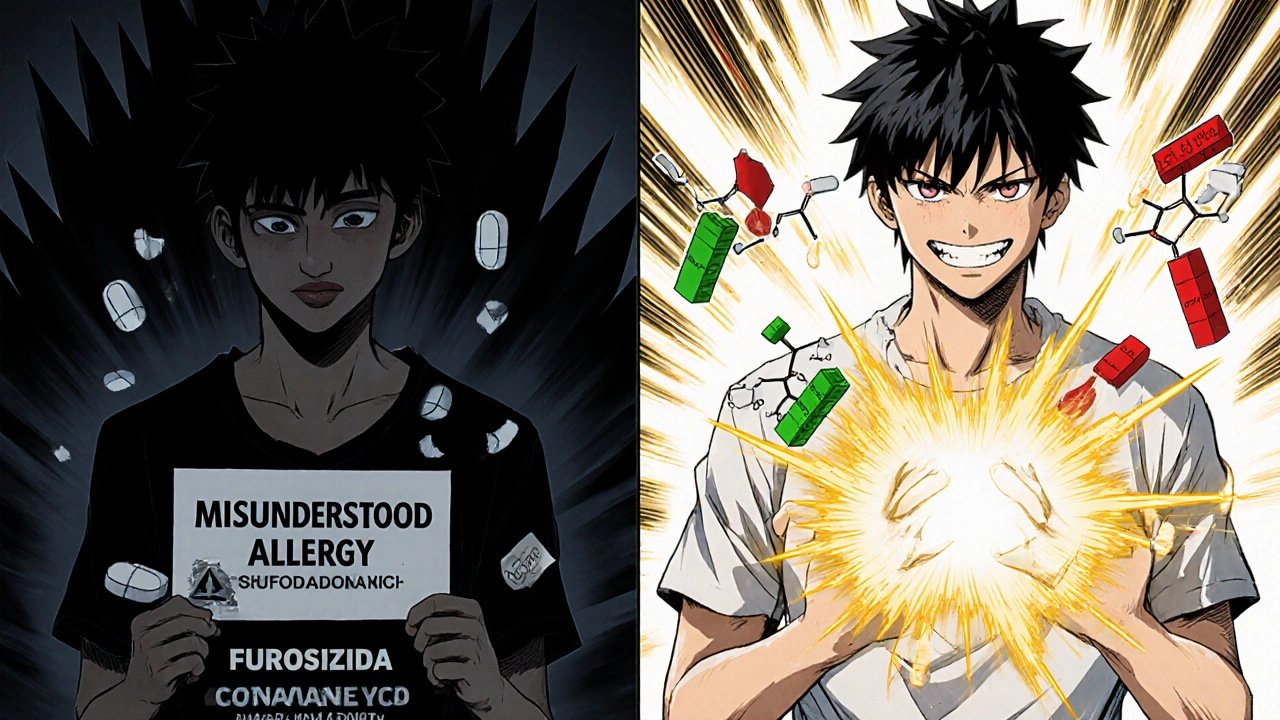
Why This Mistake Costs Lives - and Money
When doctors avoid sulfonamide antibiotics because of a mislabeled allergy, they reach for broader-spectrum drugs like fluoroquinolones (Cipro, Levaquin). These carry black box warnings for tendon rupture, nerve damage, and aortic aneurysms. In fact, patients labeled with ‘sulfa allergy’ are 2.4 times more likely to get these riskier drugs.
The financial cost is staggering. In the U.S. alone, unnecessary avoidance of sulfonamide antibiotics adds $1.2 billion a year to healthcare costs. Hospitals stay longer. Resistance grows. The CDC reports that this mislabeling increases antibiotic resistance in common bacteria like E. coli and Staphylococcus aureus by up to 13%.
And it’s not just about money. Real people suffer. One patient on Reddit said he went 10 years without hydrochlorothiazide because of a childhood rash. He ended up on three other blood pressure pills that made him dizzy and tired. Another woman avoided furosemide for years, leading to uncontrolled swelling. Both were finally cleared after a simple oral challenge at an allergist’s office.
What to Do If You Think You Have a Sulfa Allergy
If you’ve been told you have a sulfa allergy, here’s what to do next:
- Check your reaction details. Was it a mild rash that started after day 5? That’s likely not an allergy. Was it hives or trouble breathing within an hour? That’s more serious.
- Ask for documentation. Don’t let your chart say ‘sulfa allergy.’ It should say: ‘Maculopapular rash on day 6 after taking sulfamethoxazole-trimethoprim.’ Specifics matter.
- See an allergist. If you’re unsure, get tested. A supervised oral challenge - where you take a small dose under observation - is 94-99% safe and can confirm tolerance. Most people pass.
- Update your records. If you’re cleared, make sure your primary care doctor, pharmacist, and any specialists know. Ask for your EHR to be updated.
There’s a new tool called the SULF-RISK score that helps doctors predict who’s truly at risk. It’s based on your reaction type, timing, and symptoms. If you’ve never had a severe reaction, your odds of being truly allergic are extremely low.

What’s Changing in 2025
Health systems are catching up. By 2025, 75% of major hospitals will have automated alerts in their electronic records that say: ‘This patient has a reported sulfa allergy. Nonantimicrobial sulfonamides are safe unless otherwise noted.’ Epic and other EHR systems already have these built-in.
The FDA now requires drug labels for nonantimicrobial sulfonamides to state clearly: ‘This product does not contain the structural elements associated with sulfonamide antibiotic allergies.’ That’s new. And it’s helping.
There’s even a new blood test in development - a sulfamethoxazole-specific IgE assay - that’s showing 90% accuracy in predicting true allergy. It’s not widely available yet, but it’s coming.
Final Takeaway
You don’t need to avoid every drug with ‘sulfa’ in the name. You only need to avoid the antibiotic ones if you’ve had a true allergic reaction. Hydrochlorothiazide? Safe. Celecoxib? Safe. Furosemide? Safe. Dapsone? Use caution. Sulfamethoxazole? Avoid if you’ve had a serious reaction.
Don’t let an old label keep you from the best treatment. Talk to your doctor. Ask for clarification. Get tested if you’re unsure. The science is clear: most ‘sulfa allergies’ are not allergies at all. And you deserve to be treated with the right medicine - not the one that’s just easiest to prescribe.

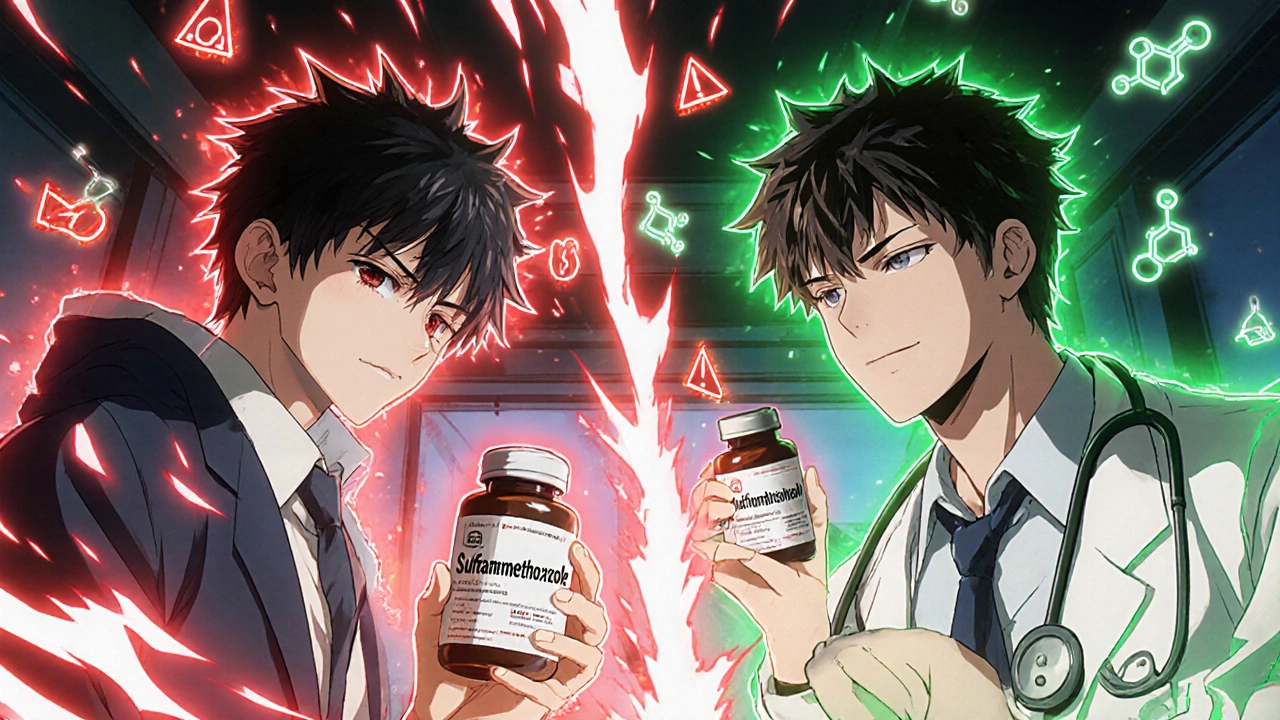


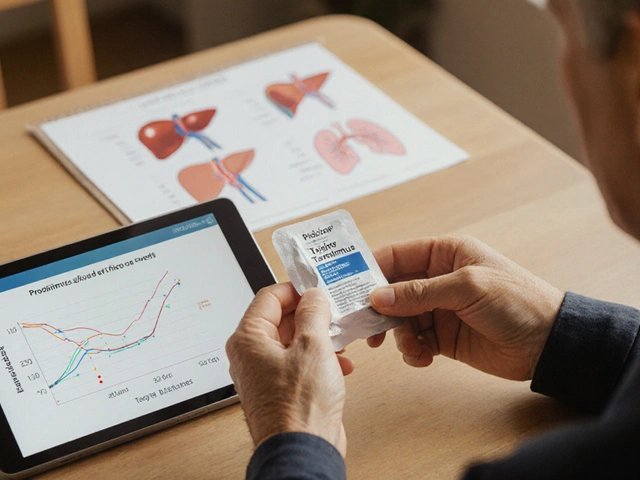



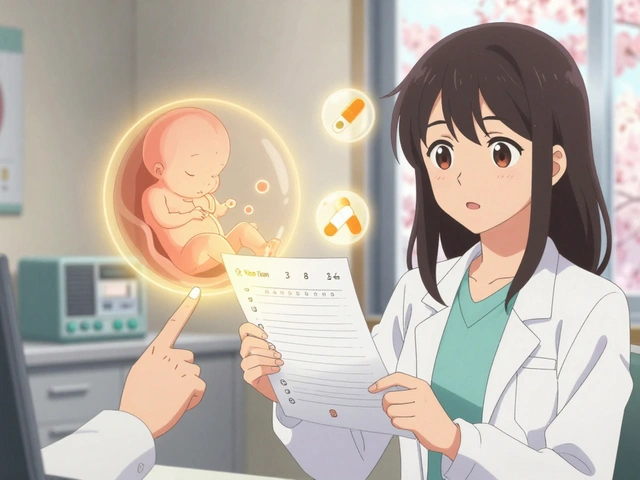
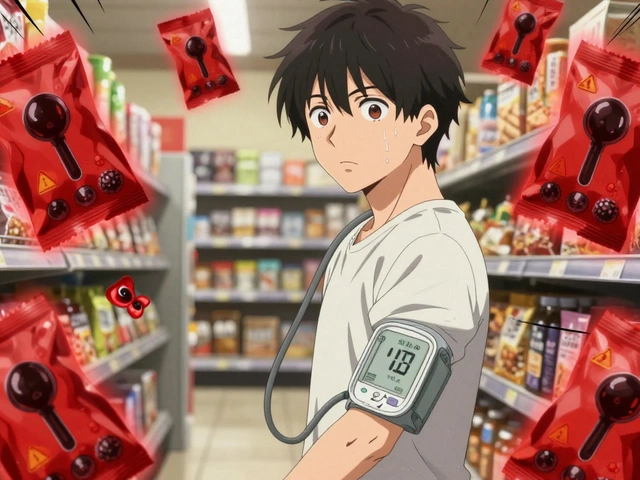
I used to be terrified of any pill with 'sulfa' in the name after my kid got a rash from Bactrim-turns out I was avoiding hydrochlorothiazide for years because of it. My BP was a nightmare until my allergist did an oral challenge. I cried. Not from fear-from relief. I wish I’d known this 8 years ago. 😭
The structural distinctions between antimicrobial and nonantimicrobial sulfonamides are not just scientifically valid-they’re clinically critical. The persistence of blanket avoidance protocols reflects a systemic failure in medical education and electronic health record design. Studies from the Journal of Allergy and Clinical Immunology consistently demonstrate that cross-reactivity rates for nonantibiotic sulfonamides are statistically indistinguishable from baseline population risk. This isn't speculation; it's evidence-based practice that’s been ignored for decades. Updating patient records isn't bureaucratic busywork-it's a matter of patient safety, cost containment, and ethical prescribing.
Wait… so you’re telling me the pharmaceutical companies and the FDA are secretly pushing this ‘sulfa myth’ to sell more expensive drugs? That’s not a coincidence. They’ve been rebranding drugs to confuse people for years. Remember when they changed the name of metformin to ‘Glucophage’? Same playbook. Now they’re telling us celecoxib is ‘safe’-but what if it’s just a new way to get us hooked on NSAIDs while they bury the real data? 🕵️♀️
It is regrettably evident that the medical community has, through a combination of negligence and institutional inertia, propagated a deleterious misconception that endangers public health. The assertion that nonantibiotic sulfonamides exhibit negligible cross-reactivity is not merely supported by literature-it is incontrovertible. The continued mislabeling of patients as ‘sulfa-allergic’ constitutes a form of iatrogenic harm. Furthermore, the substitution of fluoroquinolones, which carry black box warnings for aortic dissection and peripheral neuropathy, represents an egregious therapeutic misstep. This is not an oversight. It is malpractice.
Hydrochlorothiazide safe furosemide safe celecoxib safe dapsone risky that’s it
USA leads in medical innovation but still has doctors who think sulfites = sulfa? 🤦♂️ I’ve seen this in my VA clinic-old-school docs still cross out all sulfa drugs like it’s 1995. We need mandatory CME on this. My cousin got a rash from sulfamethoxazole at 6, now she’s 32 and can’t take her diuretic. It’s not just wrong-it’s un-American.
This is not merely a medical issue-it is a profound betrayal of trust. In India, we have seen countless patients denied life-saving diuretics due to vague allergy labels. The pharmaceutical industry, with its opaque labeling practices and profit-driven agendas, has weaponized ambiguity. And now, with EHR systems pushing ‘safe’ flags, are we being manipulated into complacency? Who audits these algorithms? Who ensures the data behind the ‘SULF-RISK’ score is not biased? This is not progress-it is a digital illusion wrapped in white coats.
My mom had a rash on Bactrim in the 80s. Got tested last year. Zero reaction to hydrochlorothiazide. She’s been on it for 6 months now and her blood pressure is perfect. No dizziness. No fatigue. Just better. If you think you’re allergic-get checked. It’s easy. It’s safe. And it changes everything.